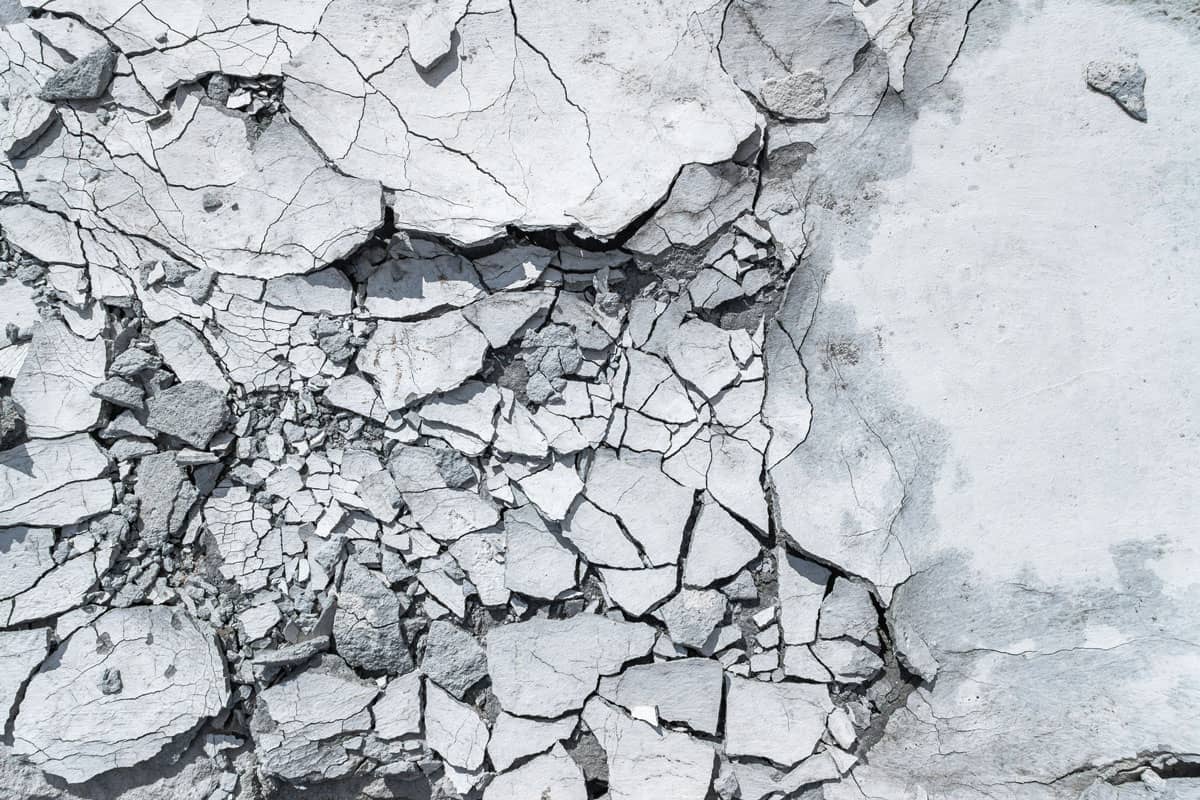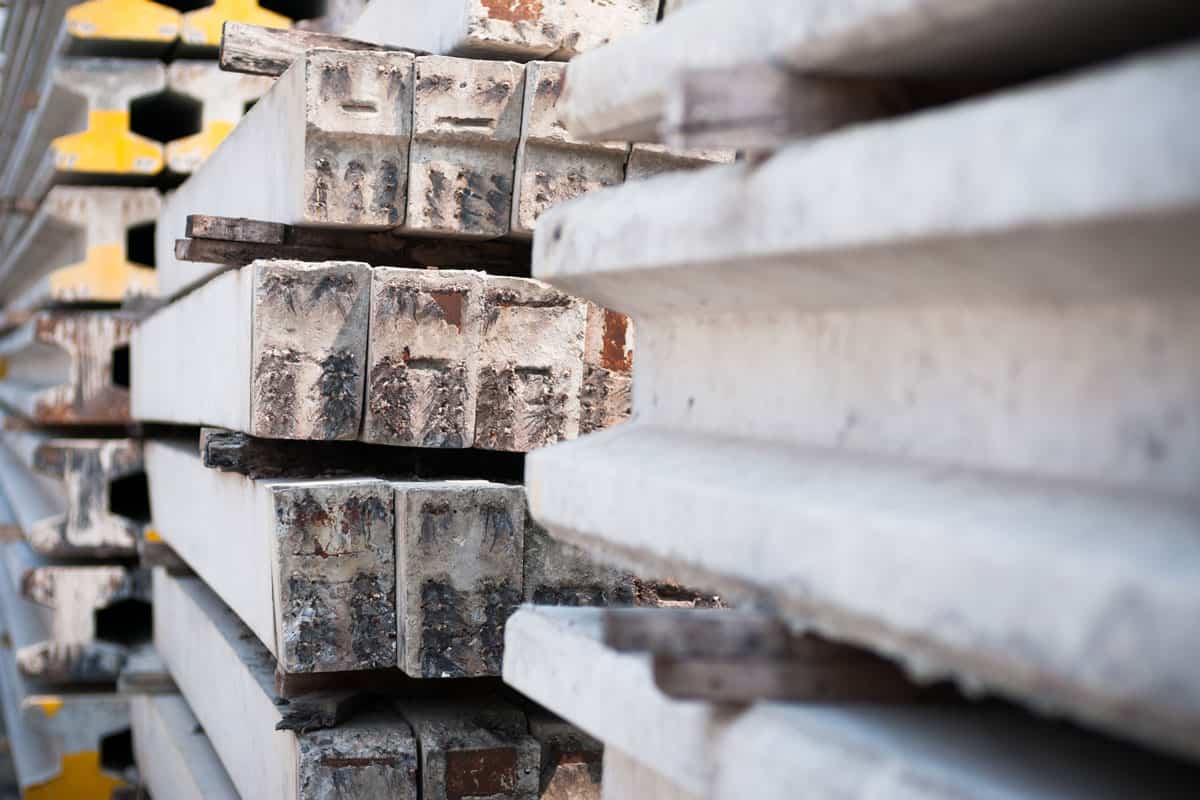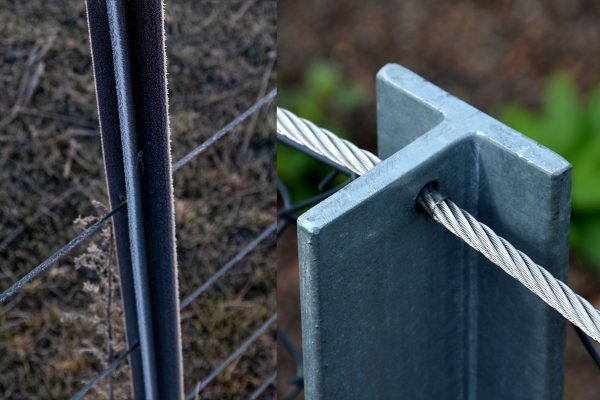The presence of cracks on your concrete fence posts can affect the integrity of your structure. But why do these fence posts crack? Can you fix cracked concrete fence posts? And how to? We gathered useful information for you and here is what we found.
There are a variety of reasons why concrete cracks but one of the main reasons is shrinkage. This usually happens when the concrete hardens and dries. Additionally, concrete cracks for these reasons:
- The concrete dries quickly
- Thermal shrinkage
- Restraint
- Settlement
- Loads
- Corrosion
- Control joints are lacking/missing
So how can you avoid these problems? And if you ever encounter a cracked fence post, how do you fix it? What danger comes with cracked concrete? Are there different types of concrete cracks? If yes, what are they? Read on to learn the answer to these questions.
![Concrete fence posts in an factory, Why Do Concrete Fence Posts Crack? [And How To Fix That]](https://fencefixation.com/wp-content/uploads/2022/05/Why-Do-Concrete-Fence-Posts-Crack-And-How-To-Fix-That.png)
How To Fix Concrete Cracks?

There are a few ways to fix concrete cracks, below are some of the best ways that we have found that you may try yourselves.
Epoxy Injection
For cracks as small as 0.002 inches, epoxy injection is used. You can coat the cracked surface with epoxy to repair the concrete fence posts. To do this, you must:
- Wipe away any residue or dirt in or around the area with a tiny amount of water using a sponge or towel.
- Let it dry completely.
- Fill the hole, crack, or damaged corner with epoxy putty that has been activated.
- As much epoxy as possible should be pressed into the cracked area.
- Wrap the area in plastic sheets and secure it with tape.
- Spritz the repair with water every day and change the plastic.
- After 5 days, remove the plastic then check the post.
- Sand any rough spots or locations that don't appear to be flush with the post. Use a dry paintbrush to remove any dust left.
- Using a paintbrush, apply an even layer of concrete sealer to the whole post.
DIY house owners can easily repair minor cracks in concrete. A variety of products can be used to fill or seal concrete cracks.


Click here for this product on Amazon
Routing and Sealing
In situations when a remedial repair is required but structural repair is not, crack routing and sealing might be performed. This approach entails widening the crack along its surface before filling it with a joint sealant and sealing it.
Drilling and Plugging
This method of fixing a crack entails drilling down the crack's length and grouting it to create a key. However, you can do this only when cracks that relatively run in a straight line are accessible from one end.
Stitching
To stitch concrete cracks, drill holes on both sides of the crack. Place U-shaped metal units with staples or stitching dogs that cross the crack. Then grout them.
Grouting
Wide cracks can be mended with cement grout. This approach works well for stopping water leaks, but it won't hold crack pieces together structurally.


Click here for this product on Amazon
Gravity Filling
Cracks with widths of 0.001 to 0.08 inches can be sealed through gravity filling using low viscosity monomers and resins.
Types Of Concrete Cracks

It is common that concrete cracks, be it after it dries or after some time. So here are some popular types of concrete cracks you might encounter:
Plastic Shrinkage Cracks
Concrete is full of water when it is still in its plastic condition. When the water evaporates from the concrete mix, it leaves enormous gaps between the mixed cement, sand, and aggregates. The concrete becomes weaker and is subject to breaking as a result of these vacant areas.
Plastic shrinkage cracks are usually minute and barely noticeable. While plastic shrinkage fractures are practically invisible, it's crucial to realize that they don't simply reside on the surface; they run the length of the slab.
Expansion Cracks
Concrete spreads and pushes everything in its path. Cracks form when the force of expansion is strong enough to break concrete when neither can flex.
Heaving Cracks
During winter when the earth freezes, it can raise several inches before melting and returning to its original position. The freezing and thawing cycle causes significant ground movement, which contributes to concrete cracking.
Settling Cracks
Settling cracks are most common when a void in the earth beneath the concrete surface is established.
Cracks Caused By Overloading
Concrete is a fairly robust building material, yet it has limitations. Putting too much weight on top of concrete might cause it to crack.
Crack Caused By Premature Drying
Premature drying can cause two different types of cracks:
- crazing; and
- crusting cracks
Crazing Cracks
These are little cracks on the surface that resemble spider webs or shattered glass. When the top of a concrete surface loses too much moisture, these cracks occur.
Crusting Cracks
During the concrete stamping process, which imparts texture and design to concrete surfaces, crusting fractures are most typically visible. On bright or windy days, the top of the concrete surface may get crusty as the top dries out quicker than the bottom.
How Does Corrosion Cause Cracks In Concrete?

Steel corrosion products typically take up a substantially higher volume than uncorroded steel, resulting in bursting stresses that can cause concrete cover cracking and spalling. The cracks that form on the concrete's surface will be parallel to the steel.
Are Cracks In Concrete Fence Posts Dangerous?
Concrete cracks aren't always terrible, but when they are, it's because they pose a risk of injury or harm to people or vehicles. Concrete cracks are unsightly, and weeds and trash can grow in them, damaging the slab's appearance.
What Are The Benefits Of Concrete Fence Post?
For one, traditional wood fence posts are significantly less sturdy and long-lasting than concrete fence posts. In addition, concrete fence posts last 10 times longer than wood posts.
Another benefit of using concrete fence posts is that they are appropriate for low-lying, frequently damp areas. Concrete fence posts eliminate rot and ensure that your fencing remains functional during wet seasons.
Concrete fence posts are also a high-end, stylish fencing option that may assist increase the value and curb appeal of any property.
Where Are Concrete Fence Posts Used?

Concrete fence posts can be used in multiple ways. So here are some of the best ways to put that concrete fence into use.
Livestock Fencing
Because of their visibility, solidity, and height, concrete fence posts are great for any animal on your farm or ranch.
Boundary Fencing
Boundary fencing can improve your curb appeal in addition to providing privacy and ownership of your property.
Decorative Fencing
You might wish to put up a fence around your yard for aesthetic reasons. You can use concrete fence posts in your decorative fencing around utilities, pool pumps, and HVAC equipment.
Security Fencing
Concrete fence posts that are weather-resistant and durable can defend your property. Concrete fence posts can provide you with peace of mind when it comes to numerous aspects of your outside space. Because of their longevity and strength, they also assist defend you from intruders and break-ins.
Garden Fencing
Because concrete fence posts can survive the environment, they are ideal for usage in exposed places. They can be used to protect against pests or to make a decorative component in yards with various soil types.
Clothesline Posts
To hang your fragile goods, link two concrete fence posts with a robust clothesline. Concrete fence posts can withstand weather even when the wind is blowing and drying your clothing.
In Closing

Concrete cracks can be caused by several reasons. The most significant reason is shrinkage. Although you don't have to worry about all cracks you see on the surface of your concrete fence posts, if the cracks are too big then you have to take necessary measures. Also, there are several ways to fix concrete cracks such as using epoxy fillers injection, grouting, and more.
While you're still here, you can check these articles on this page if you want to learn more:



